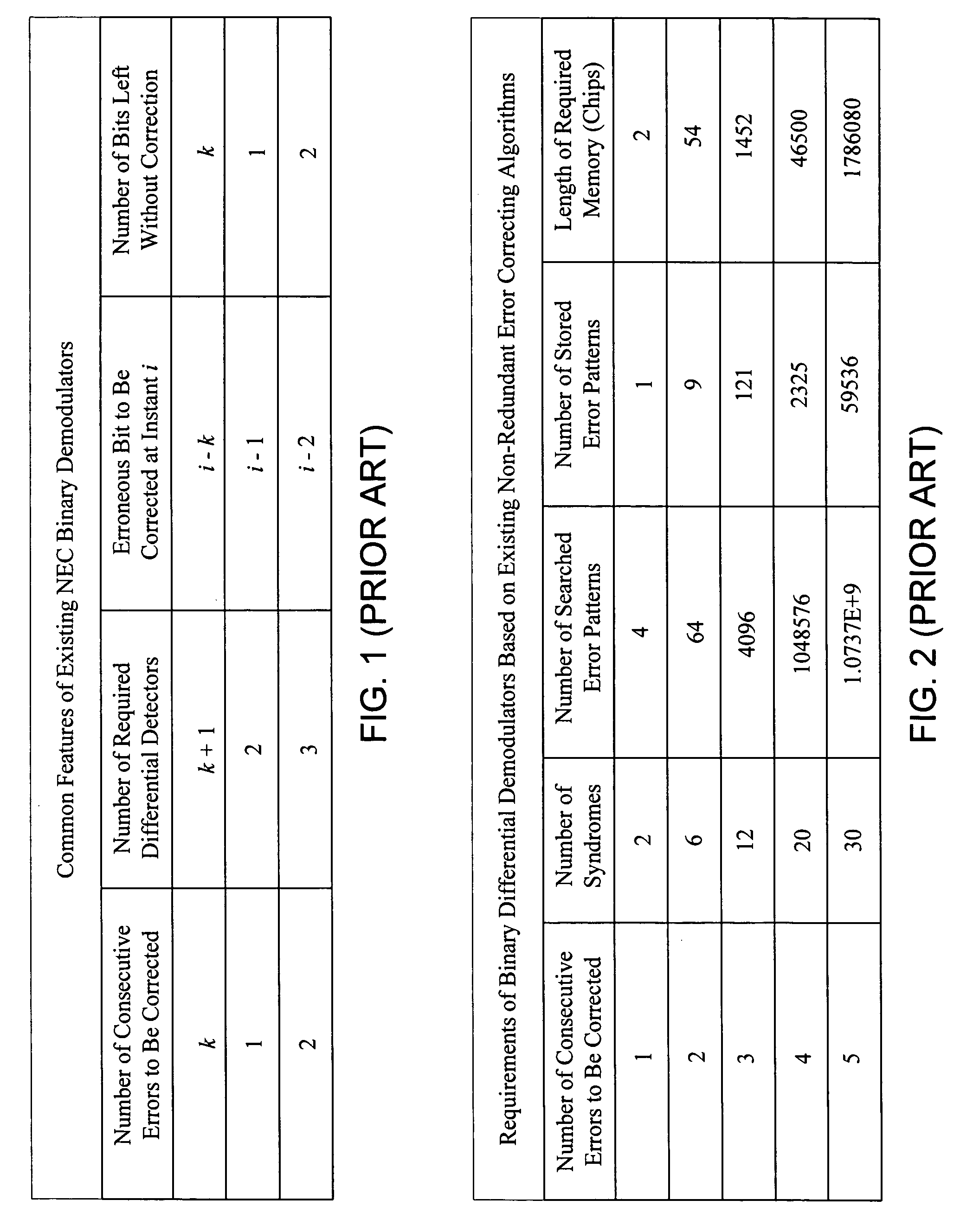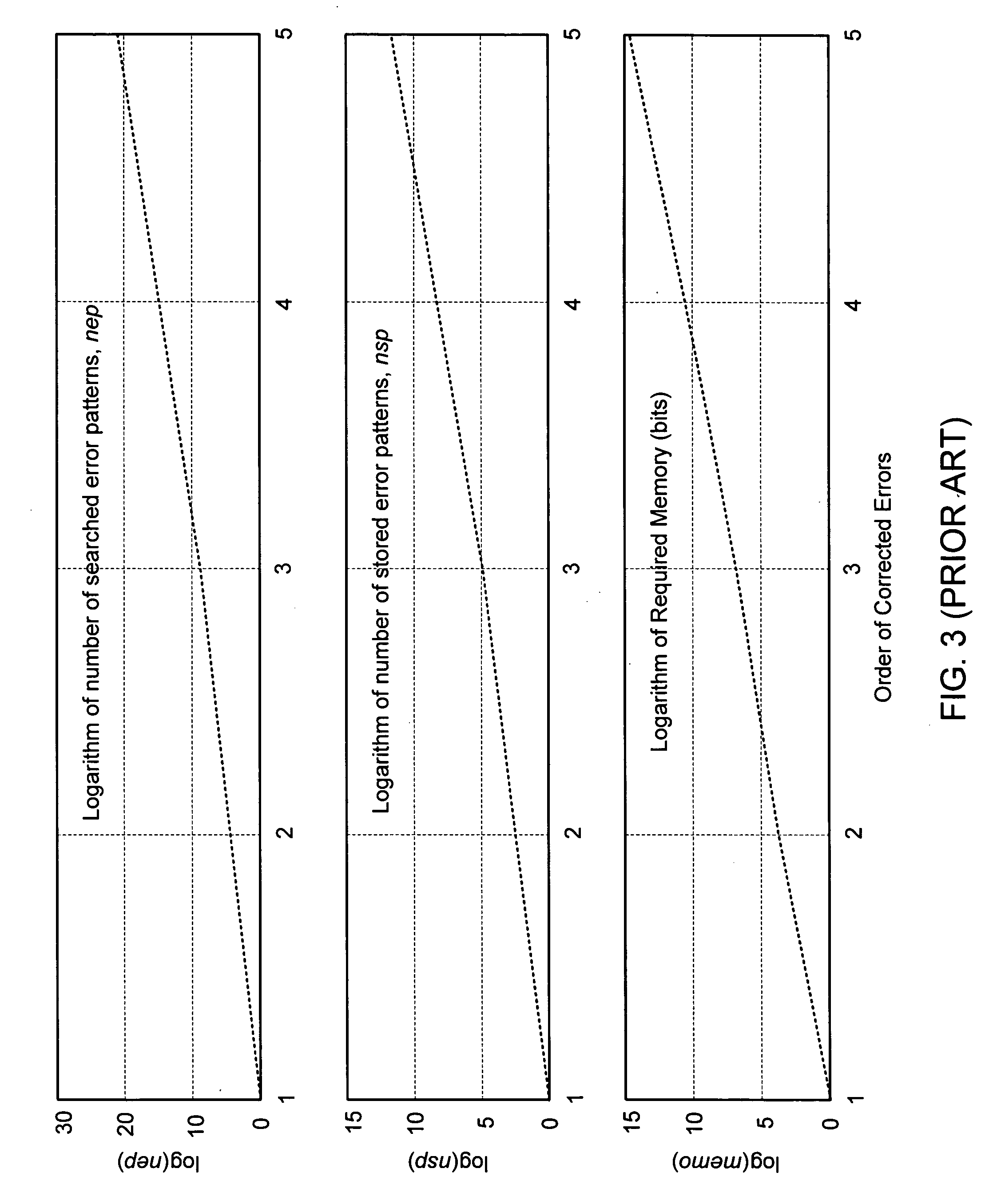Non-redundant multi-error correcting binary differential demodulator
a demodulator and multi-error technology, applied in the field of binary differential demodulators, can solve the problems of increasing the complexity of the demodulator, and the performance of the bit error rate ber of the corresponding coherent demodulator, so as to reduce the memory requirements of the circuit, simplify the error detection and correction
- Summary
- Abstract
- Description
- Claims
- Application Information
AI Technical Summary
Benefits of technology
Problems solved by technology
Method used
Image
Examples
Embodiment Construction
[0046]The present invention provides a robust algorithm for the design of non-redundant multi-error correcting binary differential demodulators. The objective of the present invention is twofold: (i) enhancing existing double-error correcting binary demodulators, and (ii) designing demodulators with higher order-error correcting capabilities. In achieving these objectives, the present invention provides a robust algorithm for designing multi-error correcting binary differential demodulators that have the following novel features:
[0047](a) An ESG module that replaces both syndrome generators and syndrome registers used in existing demodulators. Advantageously, the ESG module does not use delayed syndrome values, which reduces demodulator vulnerability to error propagation.
[0048](b) An EDAC module that replaces pattern detectors of existing demodulators. The EDAC module uses threshold values in detecting and correcting errors. This eliminates pattern detection processes, and the memor...
PUM
 Login to View More
Login to View More Abstract
Description
Claims
Application Information
 Login to View More
Login to View More - R&D
- Intellectual Property
- Life Sciences
- Materials
- Tech Scout
- Unparalleled Data Quality
- Higher Quality Content
- 60% Fewer Hallucinations
Browse by: Latest US Patents, China's latest patents, Technical Efficacy Thesaurus, Application Domain, Technology Topic, Popular Technical Reports.
© 2025 PatSnap. All rights reserved.Legal|Privacy policy|Modern Slavery Act Transparency Statement|Sitemap|About US| Contact US: help@patsnap.com



